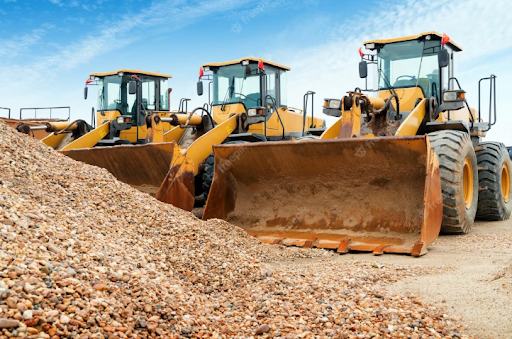Landscaping projects require precision and efficiency in moving earth and materials to create stunning outdoor spaces. Rental equipment plays a crucial role in transforming landscapes, whether it’s leveling the ground, excavating, or transporting materials. For landscaping companies and DIY enthusiasts alike, renting earthmoving equipment offers a cost-effective and practical solution. In this comprehensive guide, we will walk you through the process of renting earthmoving equipment for landscaping projects, from understanding your needs to ensuring safety and maximizing efficiency.
Table of Contents
Assess Your Landscaping Needs
Before renting earthmoving equipment, carefully assess your landscaping project’s specific requirements. Consider factors such as the project’s scale, the type of terrain you will be working on, and the tasks the equipment needs to perform. This evaluation will help you choose the right equipment that best matches your project’s demands.
Select the Right Earthmoving Equipment
Earthmoving equipment comes in various types and sizes, each designed for specific tasks. Common equipment includes excavators, bulldozers, loaders, and backhoes. Selecting the right equipment depends on the nature of your landscaping project. For instance, excavators are excellent for digging and trenching, like compact track loader are ideal for material handling and transporting.
Understand Rental Terms and Conditions
Before finalizing your rental agreement, carefully review the terms and conditions provided by the equipment rental company. Pay attention to the rental duration, rates, deposit requirements, and any additional fees. Ensure that you understand the maintenance responsibilities and liability coverage in case of accidents or damages.

Inspect Equipment Condition
Before accepting the rental equipment, thoroughly inspect its condition to ensure it meets your project’s requirements. Look for signs of wear and tear, leaks, or damage. Test the equipment’s functionality and ask the rental provider to address any concerns before you start your landscaping project.
Consider Safety Precautions
Landscaping projects involving earthmoving equipment can be hazardous. Prioritize safety by ensuring that operators are properly trained and certified to operate the rented machinery. Follow all safety guidelines and use personal protective equipment (PPE) when operating the equipment. Regularly inspect the equipment during use to identify any potential safety issues.
Optimize Equipment Utilization
Maximize the efficiency of rented earthmoving equipment by planning and organizing your landscaping project effectively. Optimize the equipment’s use by scheduling tasks efficiently and coordinating the work of multiple machines if needed. Minimize downtime by adhering to maintenance schedules and promptly addressing any equipment issues that arise.
Return Equipment in Good Condition
At the end of your landscaping project, ensure that you return the rented equipment in the same condition as when you received it. Clean the equipment thoroughly and remove any debris or materials that may have accumulated during use. This will help you avoid additional charges and maintain a positive relationship with the rental provider for future projects.
Conclusion
Renting earthmoving equipment for landscaping projects offers a practical and cost-effective solution to transform outdoor spaces efficiently. By assessing your project needs, selecting the right equipment, understanding rental terms, prioritizing safety, and optimizing equipment utilization, you can make the most of your rental experience. Whether you’re a professional landscaping company or a DIY enthusiast, following this guide will help you achieve remarkable results in your landscaping endeavors while minimizing costs and maximizing efficiency.


